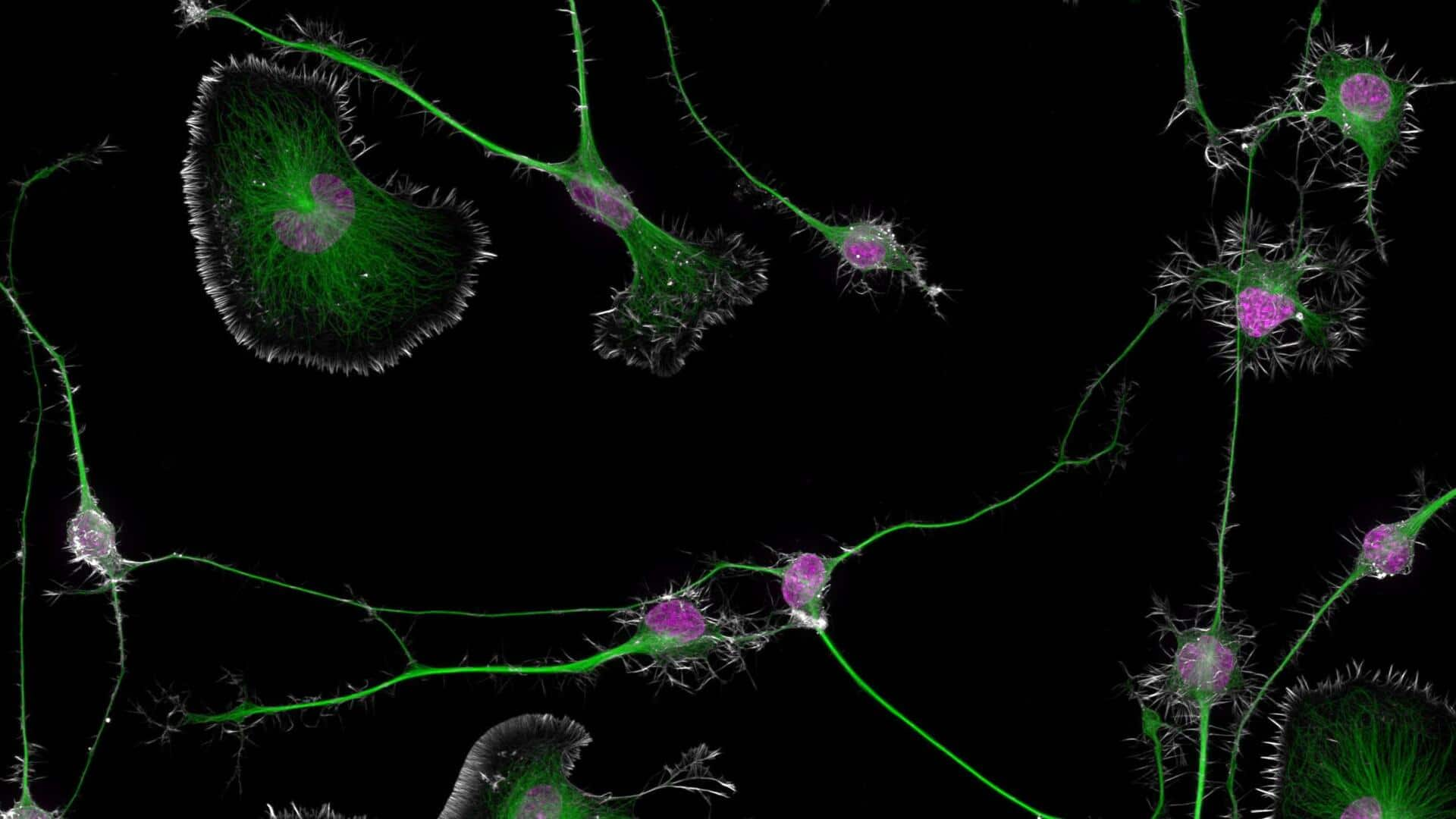
Stunning microscopic image provides key insights into Alzheimer's disease
What's the story
A revolutionary image, which took more than three months to create, has bagged the top prize in Nikon's 50th Small World micrography contest. The image, created by neuroscientist Bruno Cisterna and cell biologist Eric Vitriol from Augusta University, shows the interaction of brain tumor cells from mice. The scientists employed staining techniques on cellular components, to highlight disruptions in support and transport structures related to neurodegenerative diseases like Alzheimer's.
Cellular details
Image reveals 2 types of cells
The award-winning image highlights the intricate details of two kinds of cells: a rounder, less specialized kind and longer, more differentiated neuron-like cells. The nuclei of these cells have been stained purple while their cytoskeleton support structures have been highlighted in green. Actin and microtubules make up the main components of the cytoskeleton, acting as a supporting scaffold and transport system for other cellular components.
Protein dysfunction
Disruptions in protein linked to neurodegenerative diseases
Upon further inspection of these building blocks under the microscope, Cisterna and his team found that disruptions in a protein called profilin 1 (PFN1), which connects the two cytoskeleton components together, leads to damage to the transport system. This kind of damage is commonly seen in neurodegenerative diseases. Without PFN1, cell components like mitochondria and enzyme storage vessels called lysosomes were moved around the cell at much higher speeds than normal.
Disease link
PFN1 loss of function may lead to neurodegenerative diseases
The team noted that these changes were more pronounced in the skinny neuron-like cell types where components were transported across long branches similar to nerve cell axons. "Enhanced axonal transport has been linked to neurodegenerative diseases like ALS and Alzheimer's disease," the team said in their paper. They further showed that this could also be a consequence of PFN1 loss of function, highlighting a potential trigger for such diseases.
Potential treatment
Restoring normal actin and myosin levels could help
The researchers discovered that restoring normal cytoskeleton actin and myosin levels enabled cells to return to their normal component transport. This indicates that PFN1 controls the transport system via its interaction with the actin part of the complex. "To develop effective treatments, we need to figure out the basics first," says Cisterna, highlighting the importance of their research in understanding and treating neurodegenerative diseases like Alzheimer's.